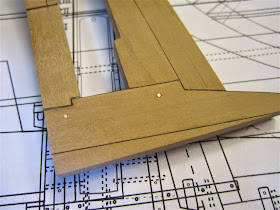 |
| Erebus drifts south in the ice, a still from Franklin's Lost Ships. © Lion Television and 90th Parallel Productions. Image provided by Andrew Gregg, used with permission. |
Last week, Lion Television, in collaboration with 90th Parallel Productions, aired a wonderful new documentary, Franklin’s Lost Ships, on CBC’s The Nature of Things. The show was directed by Ben Finney and produced by Andrew Gregg for CBC, PBS, and Channel 4.
The documentary chronicles the 2014 Victoria Strait Expedition,
culminating in the discovery of HMS Erebus by Parks Canada archaeologists and
their collaborators. The film uses detailed computer graphics, historical
reenactments, and interviews to bring the Franklin mystery into sharp focus -
in ways we have never seen before.
One of the most unique aspects of the documentary is the use
of computer animations to bring Franklin’s ships, HMS Erebus and Terror, to
life. I was fortunate to be asked to consult on the team’s attempt to recreate
the ships and I have been corresponding with the producers since December of
last year. I know that I wasn't the only researcher they consulted on the ships, so
it was definitely a crowdsourced project.
 |
| Erebus and Terror push their way through the ice - a still from Franklin's Lost Ships. © Lion Television and 90th Parallel Productions. Image provided by Andrew Gregg, used with permission. |
Andrew Gregg, a producer for 90th Parallel, oversaw the model construction process, which was undertaken by Redlab Digital, a Toronto-based visual effects studio. Mike Brown of Lion Television was also heavily involved, and Karen Kershaw led the artists at Redlab. The team’s goal, as stated to me, was to produce the most historically accurate reconstruction of the ships possible. My admittedly small role was to provide feedback and comments on the various drafts of the model build.
I sent Redlab copies of my plans and they consulted historical
data such as paintings, drawings, contemporary ship models, and the original
draughts of the ships. As they constructed the model, the artists would provide
rendered images of different angles of the vessel to Andrew and Mike, who would
then pass them on to me for comment. The process involved many drafts and I
marked-up many images as, polygon by polygon, the ships began to take on a
recognizable shape.
Until late February the ships were untextured grey geometric
models, but I remember smiling broadly when Andrew emailed the first
textured (fully coloured and detailed) render. Here was a complete view of one of
Franklin’s ships, with the correct
colour scheme and all of her unique systems, and I was thrilled to see it.
Of course, readers of my blog know that I could never be fully satisfied with the accuracy of any model, and I worried that I would annoy Andrew and RedLab with all of my suggestions for changes. However, I learned quickly that they wanted to include every detail they possibly could, and they made changes to the models right up the last minute possible before their airdate.
 |
| Fully textured render created by Redlab, showing the ship covered in ice and snow. © Lion Television and 90th Parallel Productions. Image provided by Andrew Gregg, used with permission. |
Of course, readers of my blog know that I could never be fully satisfied with the accuracy of any model, and I worried that I would annoy Andrew and RedLab with all of my suggestions for changes. However, I learned quickly that they wanted to include every detail they possibly could, and they made changes to the models right up the last minute possible before their airdate.
 |
| Erebus and Terror sail again, a still from Franklin's Lost Ships. © Lion Television and 90th Parallel Productions. Image provided by Andrew Gregg, used with permission. |
Are there errors in the models? Sure there are. But these are relatively minor given the project and they are primarily because of time constraints. There are issues with the ice channels, the masts and rigging, and the various esoteric fittings bolted to the ship. But I suspect there are only a handful of people on the planet who could point out all of the specific issues (and most of them are currently diving on the Erebus).
I’m convinced that these are the most accurate models of Franklin’s ships ever committed to film, and I want to thank Andrew and Mike for involving me in their great project. I’ve spent the better part of two years trying to build a wooden model of HMS Terror, but I never thought I’d have the opportunity to see her sail in arctic waters again. Watching Erebus and Terror plough their way through the ice allows us to better comprehend the astonishing journey of these remarkable exploration vessels.
If you read my blog, don't miss this wonderful documentary.
 |
| Erebus takes advantage of her screw propeller. A still from Franklin's Lost Ships. © Lion Television and 90th Parallel Productions. Image provided by Andrew Gregg, used with permission. |
Acknowledgments: I would like to thank Andrew Gregg and Mike Brown for allowing me to post renders of the ships and stills from the documentary. It was a pleasure to work with them.


.jpg)
.JPG)
.JPG)
.JPG)
.JPG)
.JPG)
.JPG)
.JPG)
.JPG)
.JPG)
.JPG)

.JPG)
.JPG)
.JPG)
.JPG)
.JPG)
.JPG)
.JPG)
.JPG)
.JPG)
.JPG)
.JPG)
.JPG)
.JPG)
.JPG)
.JPG)
.JPG)
.JPG)
.JPG)
.JPG)
.JPG)
.JPG)
.JPG)
.JPG)
.JPG)
.JPG)